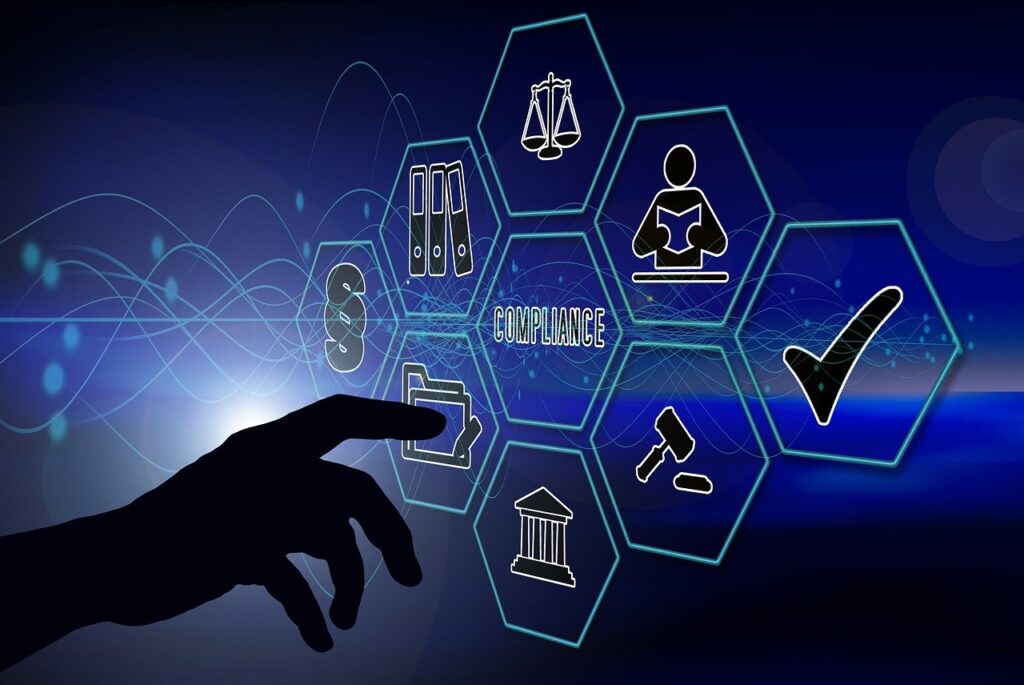Why you should Master Cybersecurity Threats in Accounting?
As October 2024 progresses, the dynamic digital environment continues to undergo rapid evolution, presenting distinctive challenges for various industries, including accounting. Cybersecurity threats in the accounting industry are a critical focus as financial professionals navigate this complex environment.
With cyber threats becoming increasingly sophisticated, protecting sensitive financial data is more crucial than ever. This blog post explores the pressing cybersecurity challenges faced by the accounting sector and offers practical strategies to enhance data protection.
The State of Cyber Threats in 2024

Cyber threats have significantly increased in frequency and complexity. Cybersecurity Ventures predicts that global cybercrime costs will soar to $10.5 trillion annually by 2025. Accounting firms, as guardians of extensive financial data, are particularly vulnerable to these threats.The 2023 ransomware attack on CPA Canada, which compromised data from over 329,000 members, underscores the severe repercussions of insufficient cybersecurity measures.
Similarly, a survey conducted by Accenture reveals that the average cost of a cyberattack in the financial sector has surged to $18.3 million per incident, emphasizing the economic impact on accounting firms.
In 2024, experts predict that accounting firms will face even more challenges in protecting their data and ensuring the security of their clients’ information. One major concern is the rise of AI-powered cyber attacks. With the rapid development and adoption of artificial intelligence (AI) technology, hackers can now use advanced algorithms to launch automated attacks on vulnerable systems. This makes it easier for them to breach defenses and steal sensitive data without being detected.
In addition, quantum computing has become more prevalent in 2024, bringing with it a new level of computer power that could potentially break current encryption methods. This has significant implications for accounting firms as they must not only
Protecting Sensitive Financial Data

- Implementing Strong Password Policies: According to Verizon’s Data Breach Investigations Report, 81% of hacking-related breaches leveraged stolen or weak passwords. To mitigate this risk, accounting firms should enforce stringent password policies, including regular changes and multi-factor authentication. Encouraging employees to use complex passwords can significantly reduce vulnerabilities. In addition, password management tools can help enforce these policies by securely storing credentials and prompting users to update them periodically.
- Utilizing Encryption: Encryption is essential for protecting sensitive data. Encoding information encryption ensures that intercepted data remains unreadable without the correct decryption key. The Ponemon Institute found that organizations leveraging encryption reduced data breach costs by an average of $1.25 million, underscoring its importance in a comprehensive cybersecurity strategy. Real-world examples include firms adopting end-to-end encryption for email communications, which protects sensitive client information from unauthorized access.
- Regular Software Updates: Ensuring the timely update of software is of paramount importance in safeguarding against known vulnerabilities. A noteworthy instance from 2023 involved the release of a critical update by a prominent accounting software provider, which served to preempt the exploitation of vulnerabilities by malicious actors. The consistent updating of software and systems stands as a straightforward yet highly effective method for fortifying cybersecurity defenses. Organizations can automate update processes, thereby ensuring adherence to regulatory requirements and operational efficiency while simultaneously mitigating the potential for human error.
Building a Cyber-Aware Workforce

- Employee Training: Human error remains a leading cause of breaches. IBM reports that 95% of cybersecurity incidents involve human mistakes. Regular training sessions can educate employees on recognizing phishing attempts and safe internet practices, transforming them into a robust first line of defense. An effective training program includes interactive modules and real-life scenarios, enabling employees to practice responses to various cyber threats.
- Simulated Cyber Attacks: Conducting mock attacks allows firms to assess their readiness and improve response strategies. A mid-sized Canadian accounting firm’s 2023 simulation revealed that 30% of employees were vulnerable to phishing, prompting enhanced training and reducing susceptibility to below 5%. These simulations not only measure current preparedness but also provide insights into areas needing improvement, thereby strengthening overall security posture.
- Fostering a Cybersecurity Culture: Encouraging a culture that prioritizes cybersecurity ensures all employees remain vigilant. Engaging in open discussions about security policies and shared responsibility can cultivate an environment where everyone plays a role in upholding high-security standards. Leadership plays a key role by setting an example and prioritizing cybersecurity in business strategies and daily operations.
Leveraging Advanced Technologies

- AI and Machine Learning: These technologies are revolutionizing cybersecurity by allowing real-time threat detection. According to Capgemini, 69% of organizations view AI as crucial for countering cyber threats. AI’s ability to analyze large datasets for anomalies allows swift and effective responses to potential threats. For example, AI-powered tools can detect unusual transaction patterns, alerting teams to potential fraud attempts before they escalate.
- Blockchain Technology: Known for its security and transparency, blockchain can bolster secure transactions and data integrity. Some accounting firms have adopted blockchain to secure client transactions, ensuring data remains intact and unauthorized access is minimized. Blockchain’s decentralized nature also adds a layer of protection against single points of failure, which is common in traditional systems.
- Cloud Security Solutions: With the rising adoption of cloud computing, robust security measures are vital. Implementing strong data encryption, access controls, and regular security audits can protect financial data stored in the cloud. LogicMonitor predicts that by 2025, 95% of workloads will be hosted in the cloud, highlighting the need for stringent cloud security protocols. Utilizing cloud service providers with advanced security credentials ensures compliance with industry standards and regulations.
Compliance and Regulatory Considerations

In the accounting industry, especially in Canada, adhering to cybersecurity regulations is crucial. The Personal Information Protection and Electronic Documents Act (PIPEDA) sets the standards for data privacy, underscoring the importance of compliance. PIPEDA requires organizations to implement protective measures for personal data and report significant breaches. Non-compliance can result in severe penalties and damage to reputation, as seen in cases where firms face fines for inadequate data protection practices.
Best practices for maintaining compliance include conducting regular audits to ensure practices align with legal requirements, investing in compliance management tools, and staying informed about changes in regulations. Implementing comprehensive data protection policies that incorporate regulatory guidelines ensures that accounting firms safeguard sensitive information and maintain trust with clients and stakeholders.
Developing a Robust Incident Response Plan
- Establishing an Incident Response Team: A dedicated team with clear roles is essential in the event of a cyber incident. Such a team can minimize damage and downtime by ensuring a swift and effective response. The team’s responsibilities include identifying breaches, containing threats, and executing recovery plans.
- Creating an Incident Response Plan: A comprehensive plan outlines the steps to take when dealing with breaches, facilitating efficient and organized reactions. Regular reviews and updates ensure the plan remains effective against evolving threats. Incorporating lessons learned from previous incidents can refine strategies and improve response times.
- Post-Incident Analysis: After a cyber incident, thorough analysis helps identify vulnerabilities and improve future defenses. Learning from past incidents is invaluable in strengthening an organization’s cybersecurity framework. Documentation of incidents and responses provides a reference for continuous improvement and compliance auditing.
Conclusion
As we progress through October 2024, the imperative for robust cybersecurity in accounting is undeniable. By implementing comprehensive security measures, training employees, and leveraging advanced technologies, accounting professionals can safeguard sensitive financial data and maintain client trust. Embracing proactive strategies and adhering to regulatory requirements is essential in defending against the dynamic threat landscape, ensuring the integrity and success of accounting practices in the digital age. The future of accounting depends on our ability to adapt and secure our systems against the ever-evolving threats of the cyber world.




